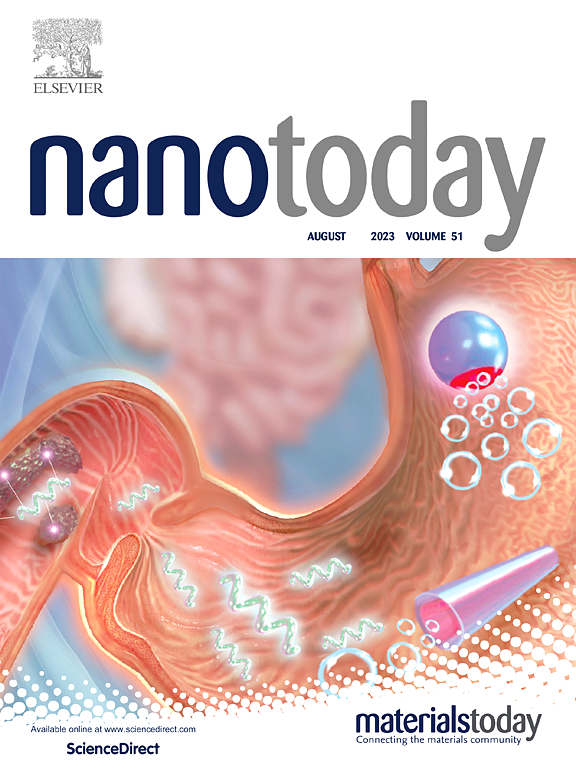Exosomes-incorporated biomaterials boost cancer immunotherapy
IF 10.9
1区 材料科学
Q1 CHEMISTRY, MULTIDISCIPLINARY
引用次数: 0
Abstract
Cancer immunotherapy has achieved significant advancements, generating substantial and sustained anti-cancer responses. However, emerging approaches, such as immune checkpoint blockade, chimeric antigen receptor-T cell therapy, and tumor vaccines, have shown limited efficacy against solid tumors. A significant challenge is immune evasion, in which tumor cells trigger insufficient immune responses and create immunosuppressive microenvironments. Exosomes-incorporated biomaterials combine the benefits of both biomaterials and exosomes, overcoming their limitations. These platforms are enriched with tumor-specific antigens, possess targeted delivery capabilities, and exhibit high permeability across biological barriers. As a result, they stimulate robust immune responses against tumors and reverse immunosuppressive microenvironments, providing a promising strategy for cancer immunotherapy. This review covers the preparation methods for exosomes-incorporated biomaterials and highlights their roles in various immune processes, including inducing immunogenic cell death of tumor cells, enhancing antigen presentation, regulating effector T cell responses, and inhibiting immunosuppressive cells, such as regulatory T cells, tumor-associated macrophages, and myeloid-derived suppressor cells. These versatile nanoplatforms have the potential to enhance cancer immunotherapy and show promise for clinical application, though challenges remain for their clinical translation.
外泌体结合生物材料促进癌症免疫治疗
癌症免疫治疗取得了重大进展,产生了大量和持续的抗癌反应。然而,新兴的方法,如免疫检查点阻断、嵌合抗原受体- t细胞疗法和肿瘤疫苗,对实体瘤的疗效有限。一个重要的挑战是免疫逃避,其中肿瘤细胞引发免疫反应不足并产生免疫抑制微环境。外泌体生物材料结合了生物材料和外泌体的优点,克服了它们的局限性。这些平台富含肿瘤特异性抗原,具有靶向递送能力,并表现出跨越生物屏障的高渗透性。因此,它们刺激了针对肿瘤的强大免疫反应,并逆转了免疫抑制微环境,为癌症免疫治疗提供了一种有前途的策略。本文综述了外泌体掺入生物材料的制备方法,并重点介绍了它们在各种免疫过程中的作用,包括诱导肿瘤细胞的免疫原性细胞死亡,增强抗原呈递,调节效应T细胞反应,抑制免疫抑制细胞,如调节性T细胞,肿瘤相关巨噬细胞和髓源性抑制细胞。这些多功能纳米平台具有增强癌症免疫治疗的潜力,并显示出临床应用的前景,尽管它们的临床转化仍然存在挑战。
本文章由计算机程序翻译,如有差异,请以英文原文为准。
求助全文
约1分钟内获得全文
求助全文
来源期刊

Nano Today
工程技术-材料科学:综合
CiteScore
21.50
自引率
3.40%
发文量
305
审稿时长
40 days
期刊介绍:
Nano Today is a journal dedicated to publishing influential and innovative work in the field of nanoscience and technology. It covers a wide range of subject areas including biomaterials, materials chemistry, materials science, chemistry, bioengineering, biochemistry, genetics and molecular biology, engineering, and nanotechnology. The journal considers articles that inform readers about the latest research, breakthroughs, and topical issues in these fields. It provides comprehensive coverage through a mixture of peer-reviewed articles, research news, and information on key developments. Nano Today is abstracted and indexed in Science Citation Index, Ei Compendex, Embase, Scopus, and INSPEC.
 求助内容:
求助内容: 应助结果提醒方式:
应助结果提醒方式:


